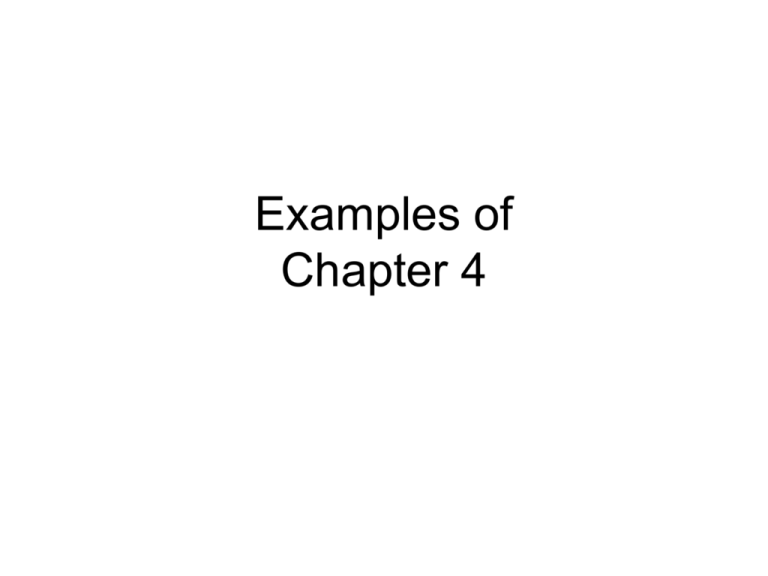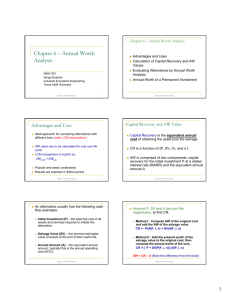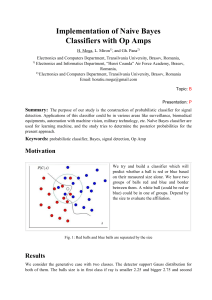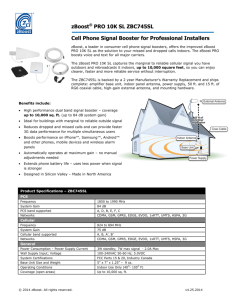Examples
advertisement

Examples of Chapter 4 • Example (Problem 4.1) The specific heat capacity cv of solids at low temperature is given by the Debye T3 law: T cv A 3 The quantity A is a constant equal to 19.4 x 105 J Kilomole-1K-1 and θ is the Debye temperature, equal to 320K for NaCl. (a) What is the molar specific heat capacity at constant volume of NaCl at 10K and at 50K? (b) How much heat is required to raise the temperature of 2 kilomoles of NaCl from 10K to 50K at constant volume? (c) What is the mean specific heat capacity at constant volume over this temperature range? • (a) (b) Solution The calculation is straight forward, inserting the temperature to the given equation cv (10K) = 19.4 x 105 J kilomole-1K-1 x (10K/320K)3 = 59.204 J kilomole-1K-1 cv (50K) = 19.4 x 105 J kilomole-1K-1 x (50K/320K)3 = 7400.5 J kilomole-1K-1 Using the definition of dq )v dT dq cv dT integrate the above equation cv ( q 50 K 10 K T A( ) 3 dT A 1 4 50 K T |10 K 3 4 q 9.236 10 4 q Q 2q 1.85 105 The unit of heat is J kilomole-1K-1 (c) The mean specific heat capacity can be calculated by dividing the sum of (cv (10K)+ cv (50K) ) by 2 Example 2 (problem 4.2) The equation of state of a certain gas is (P + b)v = RT and its specific internal energy is given by u = aT + bv + u0 (a) Find cv, (b) Show that cp – cv = R Solution: (a) cv can be found via its definition: u cv where the function of u is given T v it leads to cv a (b) u u since du dT dV , provided that u is expressed with V and T T v V T du a dT b dV thus dq du PdV , for a reversible process; dq a dT (b P )dV (1) RT Pb V V dV dT dP T P P T R 1 dV dT RT dP 2 Pb ( P b) plug in to eqn 1, As V dq adT RdT therefore : c p ( c p cv R RT dP Pb dq )p a R dT • Example 3: (Problem 4.10): The equation of state for radiant energy in equilibrium with temperature of the walls of a cavity of volume V is P = aT4/3, where a is a constant. The energy equation is U = aT4V. (a) Show that the heat supplied in an isothermal doubling of the volume of the cavity is (4/3)aT4V. (b) Show that in an adiabatic process, VT3 is constant. • Solution (a) u u du dT dV T v V T du 4aT 3VdT aT 4 dV Since du dq PdV dq 4aT 3VdT ( aT 4 P ) dV 4 4aT VdT aT 4 dV 3 As it is am isothermal process, i.e. dT 0 4 dq aT 4 dV 3 integrate the above equation from V to 2V 4 one gets q aT 4V 3 3 • (b) for adiabatic process dq = 0, thus du + PdV = 0 (4aT 3VdT aT 4 dV ) aT 4 / 3PdV 0, 3VdT TdV integrate the above equation from V1, T1 to the state of V, T 3 ln( T / T1 ) ln( V / V1 ) T1 V T V1 VT 3 V1T1 constant 3






